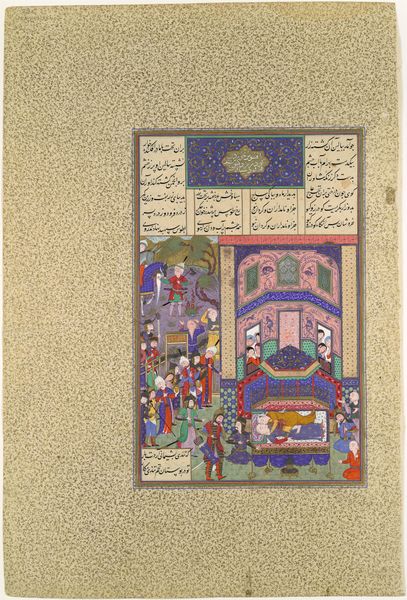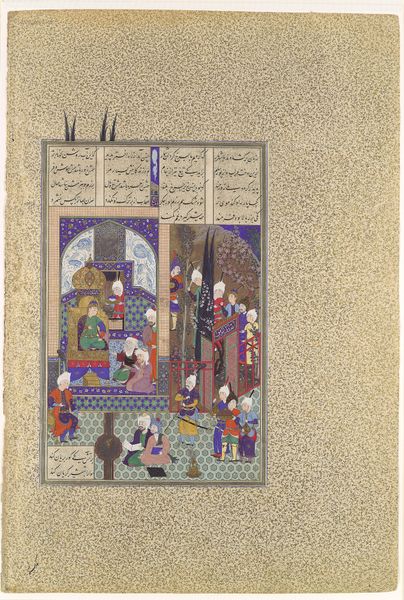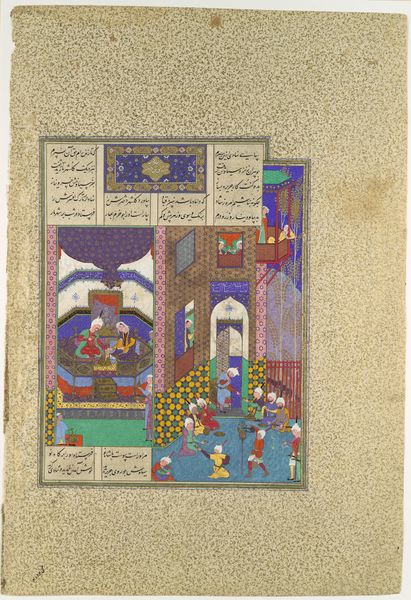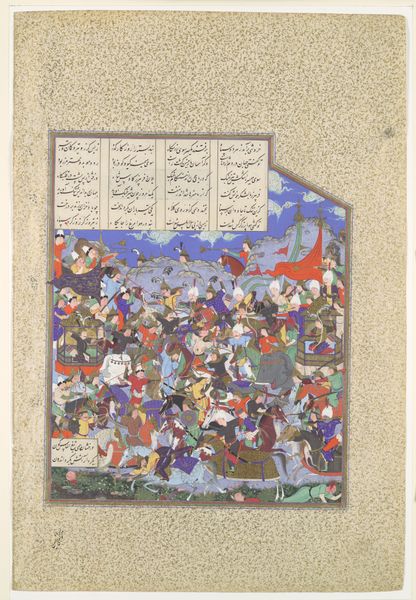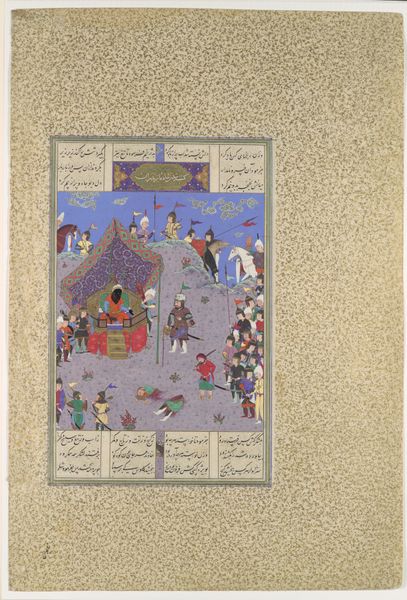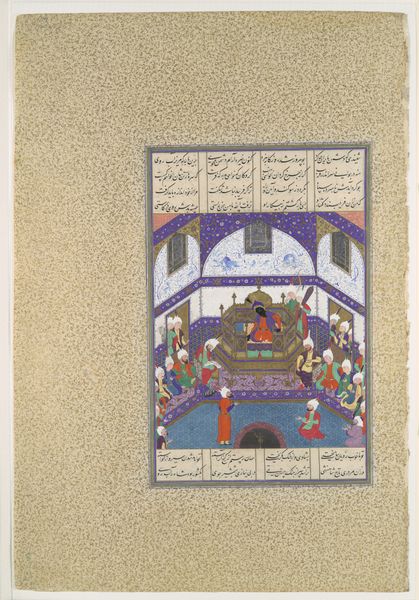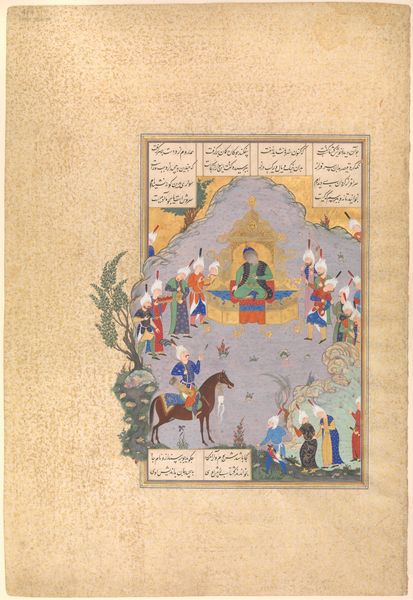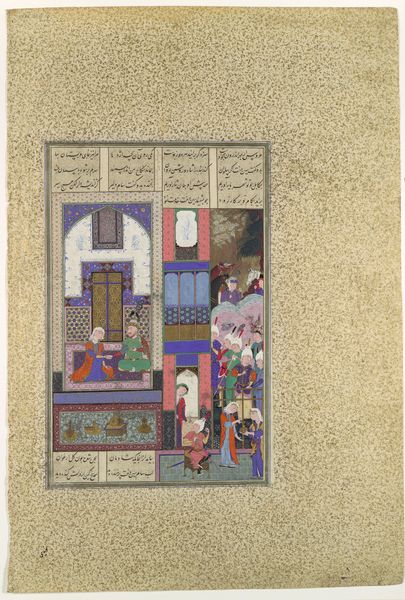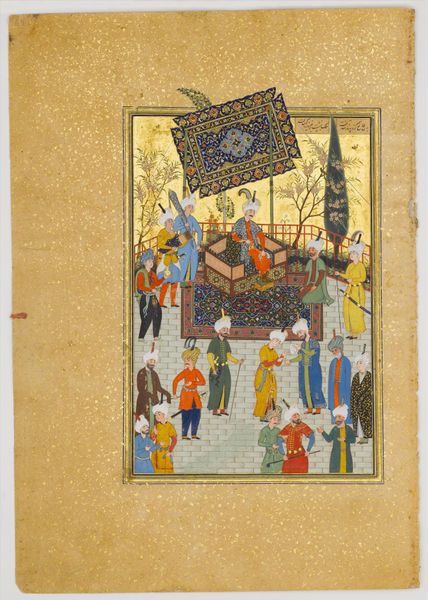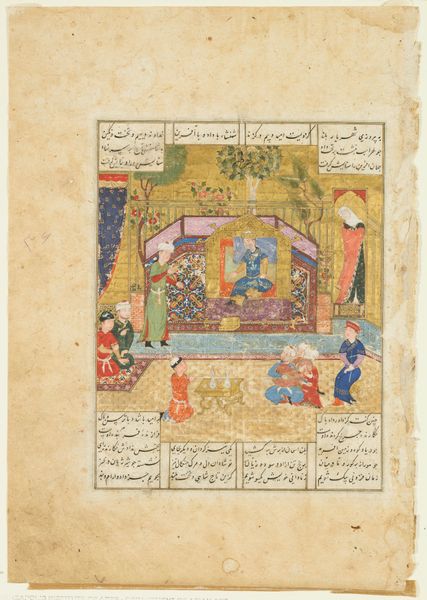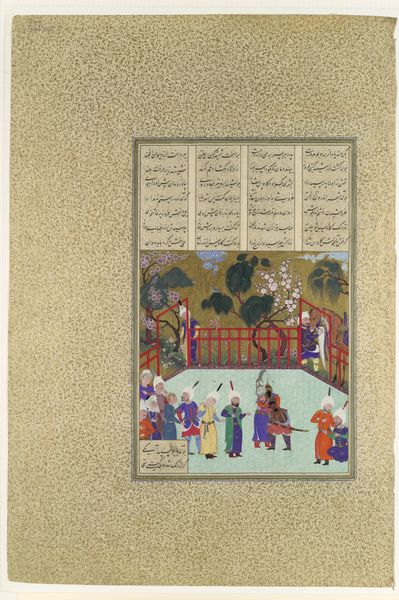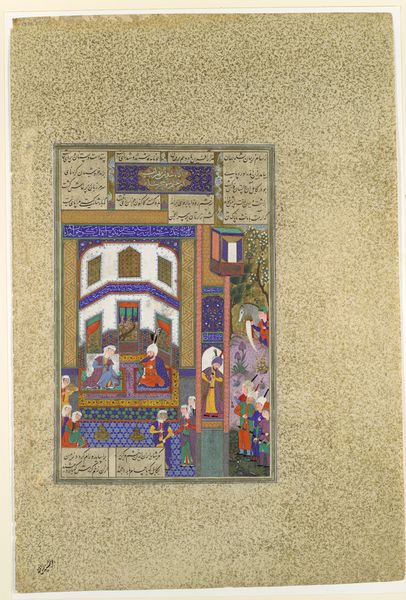
"Zahhak is Told His Fate", Folio 29v from the Shahnama (Book of Kings) of Shah Tahmasp 1498 - 1549
0:00
0:00
tempera, painting
#
narrative-art
#
tempera
#
painting
#
figuration
#
islamic-art
#
miniature
Dimensions: Painting: H. 7 3/8 in. (18.7 cm) W. 12 15/16 in. (32.9 cm) Page: H. 12 9/16 in. (31.9 cm) W. 18 1/2 in. (47 cm) Mat: H. 22 in. (55.9 cm) W. 16 in. (40.6 cm)
Copyright: Public Domain
Editor: This tempera painting is titled "Zahhak is Told His Fate", and it's from a manuscript called the Shahnama, or Book of Kings. It was created sometime between 1498 and 1549. What I immediately notice are the detailed patterns and vibrant colours. How do you interpret this work, with its intricate imagery? Curator: It is a fascinating folio. Think about the symbolism of fate itself. This isn't merely a prophecy being delivered; it’s the unveiling of a pre-ordained path. The scene, with its figures arranged in a formal, almost theatrical manner, presents fate not as a chaotic force, but as a structured narrative. Note the position of Zahhak relative to the soothsayer. Is he receptive? Is he resisting? His posture, his gaze – these all carry the weight of his psychological state. Editor: He does look passive, almost resigned to his fate. And the architectural setting—is that symbolic too? Curator: Precisely! Architecture often represents the structure of society, the framework of our lives. Notice the archways, the geometric patterns... They imply order, even in the face of impending doom. Consider the cultural memory embedded in this scene; the fear of the unknown, the desire for control, the acceptance of destiny. The Shahnama, as a whole, grapples with these themes, reflecting the anxieties and aspirations of its audience. Editor: So, beyond the literal narrative, the painting uses visual language to communicate deeper ideas about fate and human psychology? Curator: Exactly. It’s a powerful example of how images function as carriers of cultural memory. What do you make of the limited colour palette? Editor: I see a lot of blues and reds. Curator: They recur often in Persian miniature painting. What might they suggest here, in terms of mood or symbolic weighting? Consider them not as surface decoration, but as keys to understanding the emotional register of the image. Editor: I never considered how much the visual components tie in with larger cultural meanings! I see so much more than just a story being told.
Comments
No comments
Be the first to comment and join the conversation on the ultimate creative platform.
